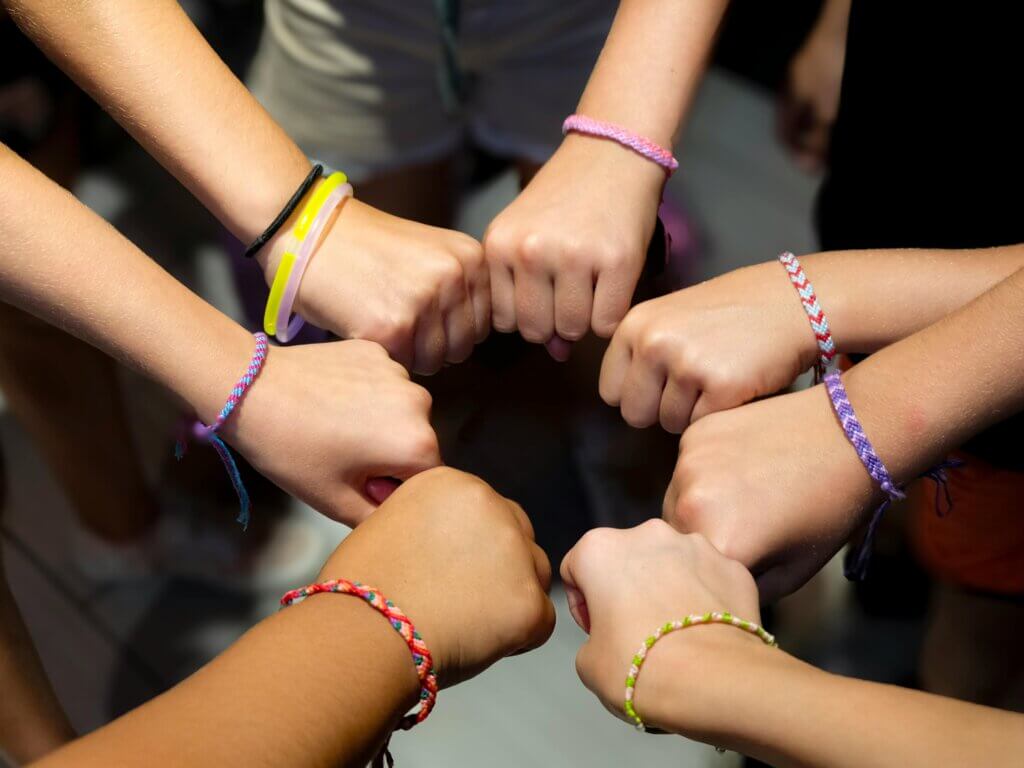2025 seems determined to be the year that facts lose the popularity contest. From social media hot takes to primetime political rants, misinformation about BDEI and justice is spreading faster than wildfire in a wind tunnel.
Belonging, Diversity, Equity and Inclusion (BDEI), along with broader social justice efforts, are being deliberately reframed as divisive, anti-white, anti-merit, or just plain wasteful. And the damage isn’t just theoretical. It’s cultural. Institutional. Global.
If we’re not careful, the backlash will reverse progress, and keep winning elections.

Belonging and misinformation: the emotional trap
Psychologists have known for decades that we’re more likely to believe information that comes from our in-group even when it’s false (Kahan, 2013). Our brains seem to be wired to prioritise social cohesion over factual accuracy. From an evolutionary standpoint, that made sense. Being wrong together was safer than being right alone (Henrich, 2015).
In the age of social media echo chambers, outrage algorithms, and personalised misinformation, this once-helpful survival trait has turned into a full-blown glitch. As we choose our people, we end up also choosing our facts. The facts we choose are the ones that make us feel like we belong (Bail et al., 2018).
The mechanism is painfully simple:
- Question the group, and you risk being cast out.
- Agree with the group, even if it’s nonsense, and you’re rewarded with likes, laughs, and a false sense of certainty.
Research on motivated reasoning shows we don’t process information neutrally. We process it through the lens of our group identities, filtering out anything that threatens our worldview (Van Bavel & Pereira, 2018).
Seems like we’ve gamified tribalism. And right now? Misinformation is winning.
When BDEI becomes the battlefield
Nowhere is this dynamic more visible than in the backlash against BDEI.
BDEI, at its core, is about:
- expanding fairness,
- removing bias, and
- building workplaces where people feel seen, heard and like they matter.
But thanks to culture war politics and fear-fuelled narratives, BDEI has been recast as everything from “anti-white” to “corporate woke nonsense.”
The backlash isn’t about logic. It’s about identity, fear, and power. And once you anchor your sense of self to a belief about those things, new information doesn’t just challenge your opinions but threatens your sense of belonging.
So instead of curiosity, we get conspiracy. Instead of nuance, we get memes. Instead of dialogue, we get culture war slogans.
And into that mess come the myths.
BDEI myths that just won’t die (and what the data actually says)
Myth #1: BDEI is anti-white.
Fact-check: It’s anti-bias. And everyone benefits from that.
Inclusion isn’t a zero-sum game. White employees benefit from BDEI efforts too, like flexible work policies, mental health support, and transparent hiring (Harvard Business Review, 2021).
Myth #2: It lowers the bar.
Fact check: It removes the hidden hurdles.
CVs with names like “Lakisha” and “Jamal” receive fewer callbacks than identical CVs with names like “Emily” or “Greg” (Bertrand & Mullainathan, 2004). BDEI doesn’t lower standards. It corrects for bias that shouldn’t be there in the first place.
Myth #3: It’s a waste of taxpayer money.
Fact check: BDEI isn’t the budget drain you think it is and it reduces costs elsewhere.
Most federal money, in the U.S. for example, goes to healthcare, defence, and social security (Congressional Budget Office, 2024). Meanwhile, employee disengagement and attrition, issues BDEI addresses, cost businesses up to $550 billion annually (Gallup, 2023).
Myth #4: It’s an Obama-era political project.
Fact check: BDEI has bipartisan roots and a long history.
Inclusion efforts existed well before Obama. Think: the Civil Rights Act (1964), the Americans with Disabilities Act (1990), and diversity in education under George W. Bush (Bush Presidential Center, 2021).
Myth #5: It doesn’t work in my country.
Fact check: It’s not a one-size-fits-all formula but it works when adapted.
Countries across Europe, Asia, and Africa are tailoring inclusion to their own realities. It has been proven that organizations with robust DEI programs report a 3.2% increase in revenue growth and a 12% rise in employee retention rates, indicating a direct correlation between DEI efforts and business performance (Ugbaja, 2025).
Myth #6: We don’t need BDEI anymore.
Fact check: If we didn’t, the data would reflect that. But it doesn’t.
At the current pace, the global gender gap won’t close for another 134 years (World Economic Forum, 2024). Systemic inequality isn’t gone. It’s just less visible if it doesn’t affect you.
Myth #7: It’s reverse discrimination.
Fact check: Equality feels like loss if you’re used to privilege but that doesn’t make it discrimination.
Members of historically dominant groups still hold most leadership roles (Homan & Abbaszadeh, 2024; Hoyt, 2014; Rimmer, 2016). “Reverse discrimination” is rare compared to traditional bias (Crosby et al., 2006).
Myth #8: Unconscious bias training doesn’t work.
Fact check: One-off workshops don’t. But systemic efforts do.
Yes, poorly designed, stand-alone training has limited impact (Dobbin & Kalev, 2016). But research shows that long-term, multi-pronged efforts, when combined with structural changes, do work (Paluck & Green, 2009; Bezrukova et al., 2016).
In other words
Belonging is powerful. But belonging built on bad information doesn’t do us all any good.
We need spaces where people can ask questions, hear the facts, and still feel part of the group.
Because real inclusion doesn’t ask you to trade your values for validation. It asks you to bring your brain, and your heart, to the table.#
References
- Bail, C. A., Argyle, L. P., Brown, T. W., Bumpus, J. P., Chen, H., Hunzaker, M. F., & Volfovsky, A. (2018). Exposure to opposing views on social media can increase political polarization. Proceedings of the National Academy of Sciences, 115(37), 9216–9221.
- Bertrand, M., & Mullainathan, S. (2004). Are Emily and Greg more employable than Lakisha and Jamal? A field experiment on labor market discrimination. American Economic Review, 94(4), 991–1013.
- Bezrukova, K., Spell, C. S., Perry, J. L., & Jehn, K. A. (2016). A meta-analytical integration of over 40 years of research on diversity training evaluation. Psychological Bulletin, 142(11), 1227–1274.
- Bush Presidential Center. (2021). George W. Bush on inclusion. https://www.bushcenter.org/
- Congressional Budget Office. (2024). The federal budget in 2024: An overview.
- Crosby, F. J., Iyer, A., Clayton, S., & Downing, R. A. (2006). Affirmative action: Psychological data and the policy debates. American Psychologist, 61(6), 576–592.
- Dobbin, F., & Kalev, A. (2016). Why diversity programs fail. Harvard Business Review, 94(7-8), 52–60.
- EEOC. (n.d.). Title VII of the Civil Rights Act of 1964. https://www.eeoc.gov/statutes/title-vii-civil-rights-act-1964
- Gallup. (2023). State of the global workplace report.
- Harvard Business Review. (2021). Creating a culture of diversity, equity and inclusion.
- Henrich, J. (2015). The secret of our success: How culture is driving human evolution, domesticating our species, and making us smarter. Princeton University Press.
- Homan, A. C., & Abbaszadeh, Y. (2024). Obstacles for Marginalized Group Members in Obtaining Leadership Positions: Threats and Opportunities. Current Opinion in Psychology, 62, 101971.
- Hoyt, C. L. (2014). Social Identities and Leadership: The Case of Gender (pp. 71–91). Palgrave Macmillan, New York.
- Kahan, D. M. (2013). Ideology, motivated reasoning, and cognitive reflection. Judgment and Decision Making, 8(4), 407–424.
- Paluck, E. L., & Green, D. P. (2009). Prejudice reduction: What works? A review and assessment of research and practice. Annual Review of Psychology, 60, 339–367.
- Rimmer, A. (2016). NHS must do more to tackle white male dominance of leadership roles, Labour Party says. BMJ, 354.
- Okafor, C. U. (2025). Examining the Impact of Diversity, Equity, and Inclusion Initiatives on Employee Satisfaction and Organisational Performance. South Asian Journal of Social Studies and Economics, 22(8), 358–369.
- Van Bavel, J. J., & Pereira, A. (2018). The partisan brain: An identity-based model of political belief. Trends in Cognitive Sciences, 22(3), 213–224.
- World Economic Forum. (2024). Global gender gap report 2024.



